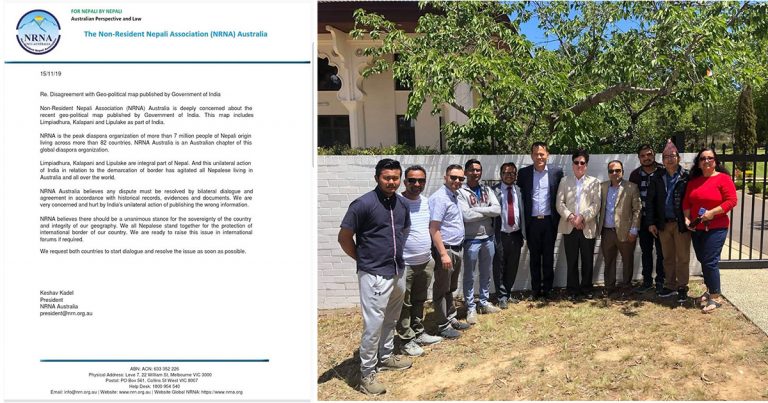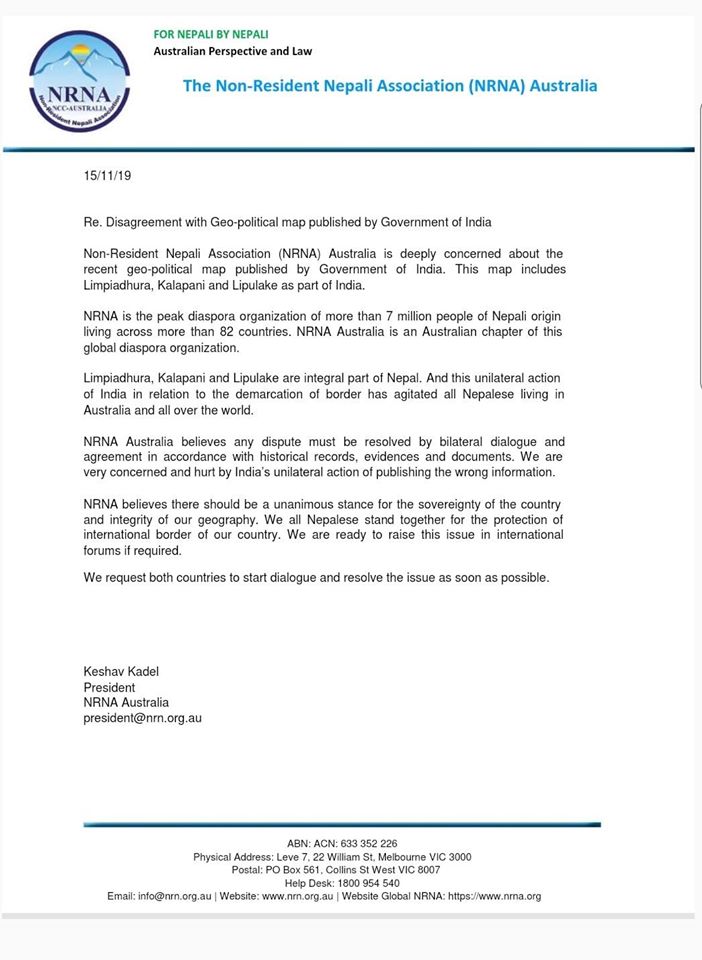
Following up on Non Resident Nepali Association Australia’s earlier announcement to hand over a ‘letter of protest’ to all Indian consular offices in Australia including the High Commission in Australian Capital Territory, NRNA ACT has handed over the same at Indian High Commission in Canberra on Friday.

A team led by Chudamani Sapkota (VP NRNAA) handed over the letter. They have thanked other attending members, and have assured that all other SCC will handover the letter to Indian Consular offices in all states in the coming days. ” Special mention to Hon Deepak Khadka and Mana Khatri ( VP ICC), Raju Adhikari (ICC Member ), Rajan Dhungel ( past VP NRNAA) and all executives and members of NRNA ACT”, they have said.
What is the Kalapani territorial dispute?
Kalapani territorial dispute, a long standing border dispute in Nepal’s Darchula district and India’s Uttarakhand state is ongoing since India achieved independence from their British rulers. The dispute however dates back further. The 1816 Treaty of Sugauli signed by Nepal and British East India Company defines the Kali River as Nepal’s western border – however in the upper reaches there are several tributaries creating a confusion in which river should be earmarked as the border.
Nepal lays claim to all areas east of the Lipu Gad/Kalapani River, saying Lipu Gad is in the the source of Kali River. India believes Kali River begins only after Lipu Gad and is joined by other streams arising from the Kalapani springs. A huge uproar was created after India, on November 2 published an ‘official political map’ which included the disputed territory within their area.
The Nepal government made the claim on November 6, 2019, few days after India issued its new political map, which showed Kalapani as a part of its own territory. Nepal, for its part is yet to release a political map which it believes to be correct.





